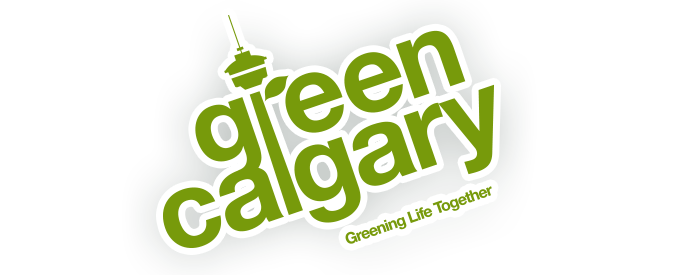DIY Rain Barrel
Posted on June 11, 2024
With a drought in Southern Alberta, potential watering schedules, and the outdoor watering restrictions from the water main break in NW Calgary in June 2024, saving rainwater for watering your garden is now one of the best ways to make sure your garden remains lush and healthy all summer long.
Whether you’re looking at starting rainwater harvesting for the first time or adding some extra harvesting to your setup, a rain barrel is the simplest way of collecting rainwater. If you didn’t manage to get a rain barrel from Green Calgary this season or couldn’t find a rain barrel that fits your needs, we have some tips for making your own!
First of all, there are some risks to making your own rain barrel. Here are some things to think about before you get started.
1. Rain barrel leaking. One of the issues you could experience is that a DIY rain barrel might leak more than one you get from a retailer. This is often because getting a good seal on the tap/spigot assembly is difficult, and the weight of the water when the barrel is full will put a lot of pressure on that assembly. You can mitigate this by selecting the thickest-walled plastic container you can find. The thicker plastic will help prevent it from warping in shoulder seasons from the freeze-thaw cycle of Calgary. However, don’t be surprised if you have to change the tap/spigot out in a few years or get repairs.
2. Leeching material. The material you make your DIY rain barrel with might leech into your water. Green Calgary’s barrels are made with food-grade plastic, which doesn’t have this problem, but new plastics will likely leech somewhat and if you manage to find a container that was previously used for something else, whatever was in it will leech into your water as well. Even food-grade plastic containers might not have held food previously, and some of the chemicals used in these containers are dangerous to your health. If you can’t find out what exactly was in the barrel before, we suggest using new plastic and never using the water on food plants.
3. Longevity. Many DIY solutions will have less longevity than Green Calgary’s rain barrels due to their materials and construction. Still, treating the barrel with care will maintain its integrity over a longer period. We suggest winterizing your barrels annually by putting them inside in a garage or shed.
4. Open top. While an open top to your DIY rain barrel is convenient, it comes with risks. If you leave the top open, critters and possibly others (such as children) have more opportunity to fall into the barrel, causing harm to them and to you. We suggest keeping the top closed at all times unless you are cleaning the barrel.
With those out of the way, here are some suggestions for making your own rain harvesting set up! For a good step-by-step guide, we recommend this article. We'll be using it as a base while discussing more rainwater harvesting tips. There are a few things you can do to make this kind of barrel even more effective, however.
1. Downspout. The article above does not direct the water from a downspout into the barrel, limiting how much water can be gathered and how quickly. We suggest cutting a downspout and attaching an adjustable downspout extender to direct water into the barrel to fill faster.
2. Winterize. The article doesn’t discuss winterizing, but in Calgary, it’s important to winterize your barrel every year. We suggest winterizing in mid-October and setting up your barrel again in early May. To winterize, empty the barrel completely and put it indoors or upside down to keep water out – if you leave it outside, secure it so the wind doesn’t blow it away.
3. Keep it small. While we understand that there is a desire to gather as much water as possible, we suggest that each barrel you make be relatively small (such as the one in the article). The more water in the barrel, the more pressure on the container and most garbage cans can’t take the weight of too much water before breaking. Additionally, the tap/spigot might leak if there is too much water weight behind it.
4. Set it on something solid. The article shows a method of constructing a stand from wood for your rain barrel, which would work nicely! However, if you don’t want to make a stand, the barrel still needs to be on a flat and even surface, and on something solid. Placing it on cinder blocks on top of a paving stone is a good way to ensure stability while giving you enough height to get the water out.
Making your own rainwater harvesting device can be a fun and economical alternative to buying a rain barrel and we want to make sure everyone who wants to harvest rainwater can get that chance. If you try this out, feel free to ask us questions and please let us know about it! We’d love to share any insights you find with our fellow Calgarians!
You can reach us at products@greencalgary.org or by calling 403-230-1443 x222.
